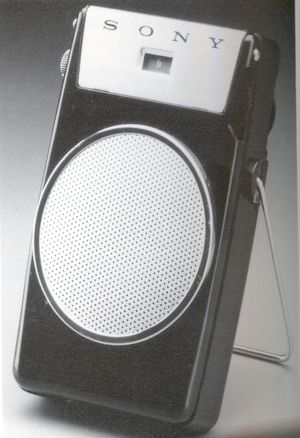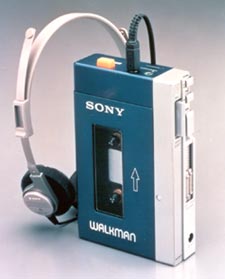The Transistor and Portable Electronics
The Transistor and Portable Electronics
History
Invented at Bell Telephone Laboratories between 1945 and 1948, many consider the transistor to be one of the most important inventions in 20th century technology. The story of the first working transistor underscores the power modern industrial laboratories have had to coordinate scientific discovery in the pursuit of technological breakthroughs. It is about great intellectual leaps and driving ambition. However, only a few scholars know that the pursuit of the solid-state amplifier has an even longer history than the transistor. This quest dates back to 1924–1925, and the work of Julius Edgar Lilienfeld.
Though Karl Braun’s cathode ray tube (1897) and Ambrose Fleming’s vacuum tube rectifier (1904) marked the beginning of the electronics age, Lee de Forest’s triode actually propelled electronics forward. By placing a wire “grid” between the cathode and anode, de Forest transformed Fleming’s rectifier into an amplifier. With amplification, radio communications blossomed and long-distance telephony became a reality.
The very success of the triode, however, brought out its long-term limitations. It was a fragile device that consumed a lot of power. And so in the mid-1920s, with an eye on radio technology, Julius Edgar Lilienfeld set out to find a solid-state replacement for the thermionic triode.
In patent applications to Canada in 1925 and to the United States in 1926, Lilienfeld claimed that his solid-state amplifier “relates to a method of and apparatus for controlling the flow of an electrical current between two terminals of an electrically conducting solid by establishing a third potential between said terminals.” He filed two more U.S. patent applications in 1928. In his 28 March U.S. patent application, Lilienfeld was more explicit about what he was after: “the provision of a simple, compact and substantial device which withal shall be inexpensive to construct.” Offering an alternative to thermionic principles, Lilienfeld argued that his novel device “[could] be operated under much lower voltage conditions than heretofore.”
Portable Electronics
Prior to the 1947 invention of the transistor, electronics were anything but portable. While people longed to take radios with them on trips, the reality of using large vacuum tubes for sound amplification made it virtually impossible. The transistor, an electronic device for amplifying an electronic signal, began a revolution within the electronic components industry. Their tiny size, reliability, and durability enabled manufacturers to shrink the size of electronics and thereby make electronics truly portable.
One of the earliest successes was the transistor radio. Regency, a small Indianaopilis based firm, introduced the first commercial transistor radio in time for the 1954 holiday season. It was based on a design by the Texas Instruments Corporation, which manufactured most of the electronic components. . Also, in the early 1950s, a representative of the Totsuko Corporation (which was later renamed SONY) traveled to the United States to find out about transistors. The representative walked away convinced of the transistor’s potential. SONY introduced its first transistor radio in 1955. Quickly, dozens of other companies brought transistor radios to the market and the era of low-cost, mass-market, portable consumer electronics had begun.
The ramifications of the transistor radio and portable products were immense. Transistor radios revolutionized the way people listened to music. Radios, which only a decade before were often the size of a piece of furniture, could now be toted around. Away from the eyes and ears of their parents, teenagers could listen to whatever they chose, wherever they chose. They frequently chose rock and roll music, which itself was just beginning to reach a mainstream audience. The growth of this new music was encouraged by the transistor radio.
The love of portable products has only escalated since their introduction in the 1950s. Few could live without their iPods, cell phones, PDAs, and pagers. Each of these products contain millions of transistors that are now mapped onto tiny wafers called integrated circuits, or more commonly, chips.

